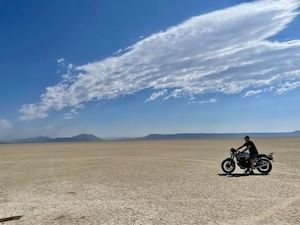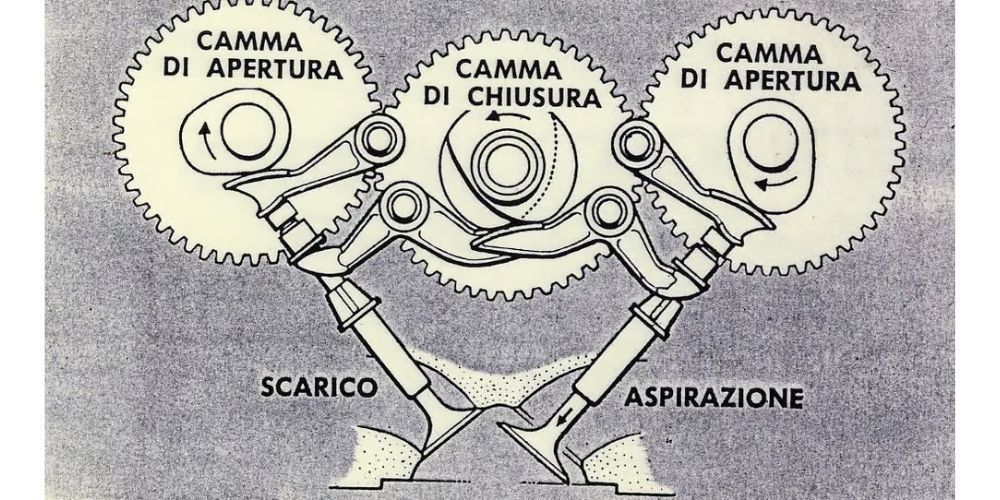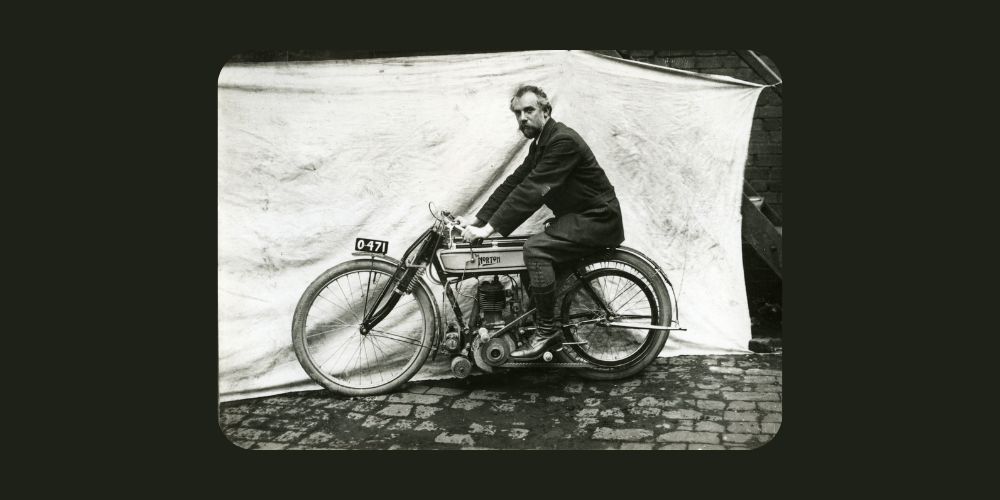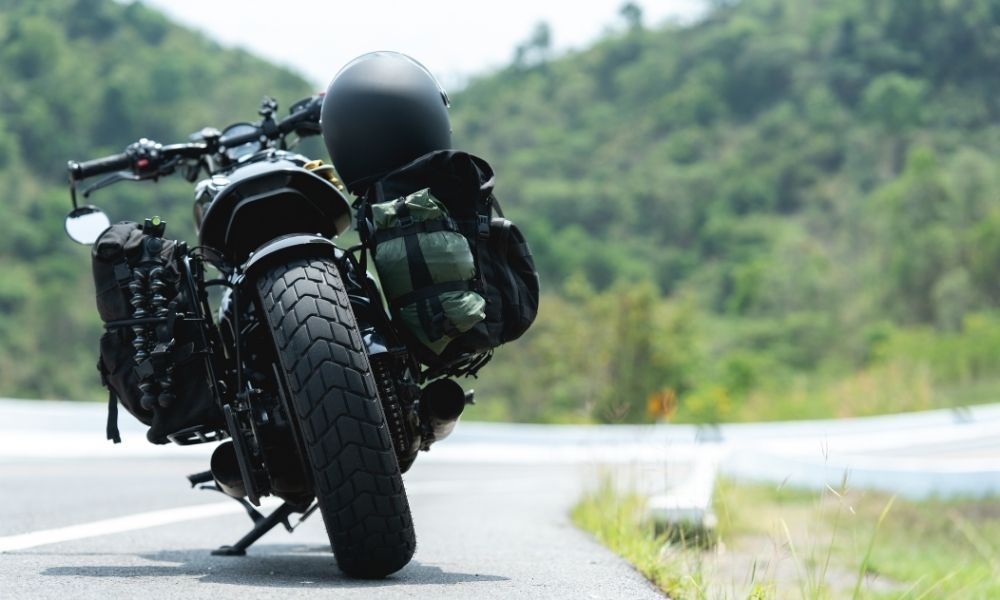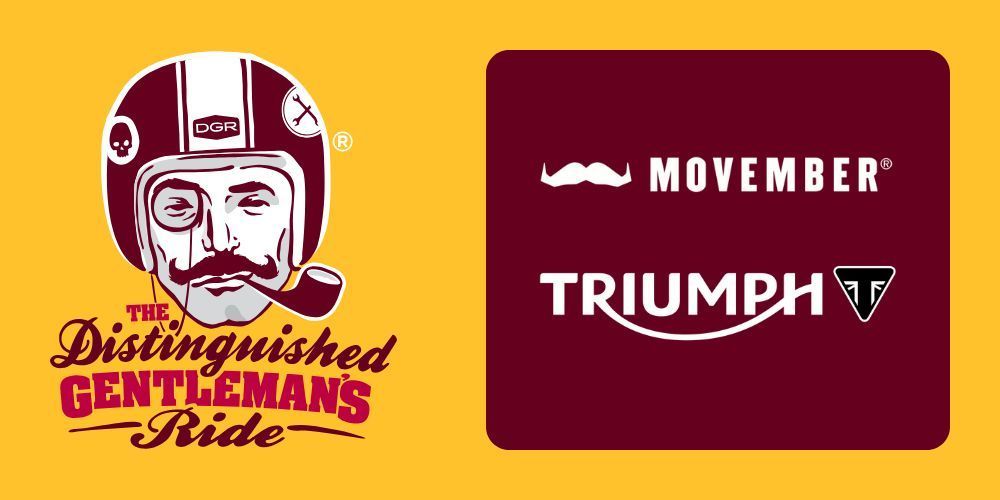UK Motorcycle History: From Vintage Classics to Modern Icons
The UK's motorcycle history is like a grand old road, stretching all the way back to the 19th century. It starts with inventors dabbling with self-propelled bicycles, bringing forth creations like the Butler Petrol Cycle in 1884, an early pioneer albeit not a commercial success. Then come companies like Excelsior Motor Company and Royal Enfield, stepping on the throttle and setting new milestones for the industry. From then on, it's been a thrilling ride full of constant innovation. Now, follow us down this memory lane and buckle up for some historical gems.
The history of motorcycle development in the United Kingdom is rich and varied, with significant milestones such as the invention of the Butler Petrol Cycle in 1884, the establishment of iconic manufacturers like Royal Enfield and Triumph, and the emergence of influential subcultures like Café Racers and Mods. This history encompasses innovations, world-renowned racers, and a shift from practicality to lifestyle, shaping the global motorcycle industry.
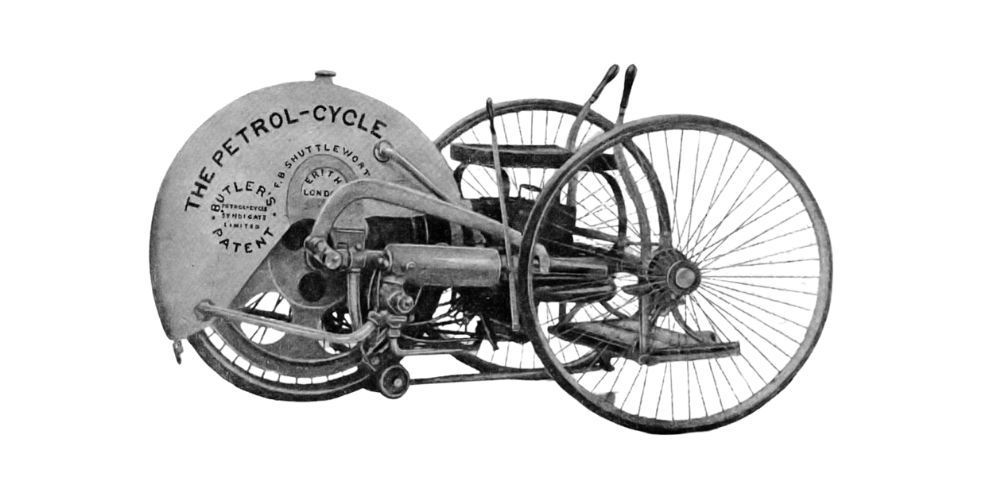
Inception of Motorcycling in the UK
As we journey back to the late 19th century, we find ourselves amid a period of groundbreaking experimentation with self-propelled bicycles. It was during this time that the United Kingdom witnessed the birth of what would later become an iconic industry. The creation of the Butler Petrol Cycle in 1884 marked a significant milestone as the first self-propelled bicycle utilizing an internal combustion engine.
Despite its innovative design, the Butler Petrol Cycle did not achieve commercial success due to certain engineering limitations. However, this pioneering invention laid the foundation for future developments in motorcycling technology and sparked curiosity and innovation that eventually transformed transportation.
In the wake of these early experiments, motorcycling continued to gain momentum, leading visionaries and engineers to seek improvements in design, subsequently setting the stage for significant advancements in the industry.
In 1896, the Excelsior Motor Company manufactured the first publicly available motorcycle, shifting gears from experimental prototypes to tangible products for consumers. This marked a pivotal moment, providing enthusiasts with unprecedented access to motorcycling.
Nowadays, we often take for granted the convenience and accessibility of motorcycles, but it's important to recognize the humble beginnings that ultimately laid the groundwork for their modern iteration.
The emergence of publicly available motorcycles demonstrated how the industry gained traction, setting the stage for pioneering manufacturers to further elevate motorcycling and shape its storied history in the United Kingdom.
This pivotal moment in history paved the way for remarkable individuals and companies to leave an indelible mark on the motorcycle industry. Let's now explore the trailblazers who propelled the United Kingdom into becoming a powerhouse in motorcycle manufacturing.
Pioneers of the UK Motorcycle Industry
The Excelsior Motor Company holds a significant place in history for being responsible for producing the first publicly available motorcycle in 1896. This was a monumental achievement that set the pace for the future of motorcycling in the UK. Their contribution went beyond just creating motorcycles; it marked a transformational shift in transportation and innovation. The availability of their motorcycle made an impact on how people envisioned personal travel and introduced a new era of mobility that was faster, more convenient, and accessible to a wider audience.
On a parallel trajectory, Royal Enfield's emergence in 1901 further solidified the industry's foothold—making strides by introducing motorcycles that captivated and inspired riders. Their efforts not only marked an important milestone in mechanized transportation but also played an instrumental role in shaping cultural perceptions surrounding mobility and freedom. These early pioneers instigated a shift towards modernization, redefining how people perceived travel and ultimately influencing the course of motorcycling history.
Their vision and pioneering spirit set the wheels in motion for a newfound enthusiasm that would eventually evolve into one of the most celebrated forms of transportation, recreation, and sport. The legacy they left behind continues to be revered to this day, with their impact resonating throughout the annals of motorcycle history.
In 1896, Excelsior Motor Company produced the first publicly available motorcycle, marking a significant leap in the development of motorcycling in the UK. Subsequently, Royal Enfield's establishment in 1901 further bolstered the industry, contributing to its growth and evolution. The contributions of these pioneers laid the groundwork for an industry that would continue to innovate and shape — not just as a means of transport, but as a symbol of freedom, adventure, and exhilaration for generations to come.
With such inspiring origins, it’s no wonder that British motorcycling history has been so groundbreaking. Now, let’s explore another transformative aspect: "The Impact of Racing on British Motorcycling.
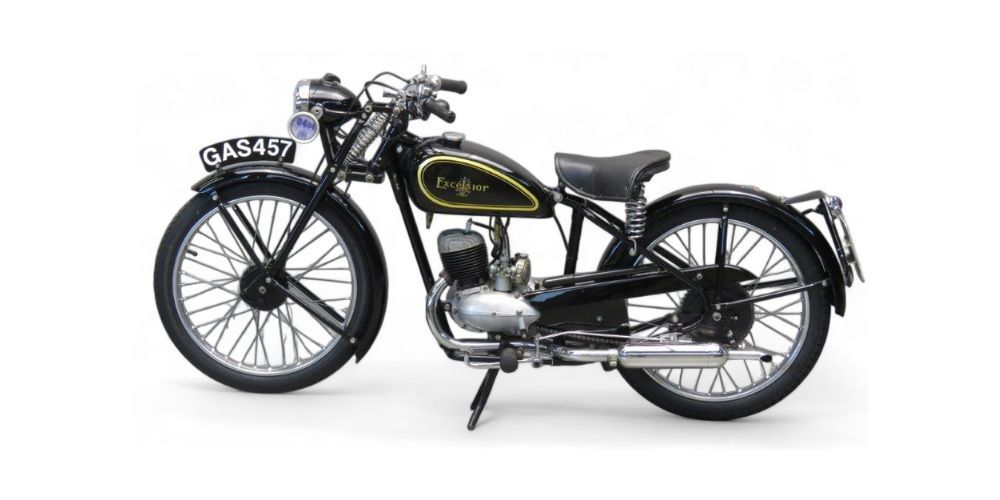
The Impact of Racing on British Motorcycling
The world of motorcycle racing is more than just thrilling competition; it serves as an engine driving technological innovation and cultural renewal. The impact of racing on British motorcycling has been profound, reaching far beyond the racetrack. Notable figures such as Leslie Graham, Geoff Duke, John Surtees, and Mike Hailwood took center stage and showcased their exceptional skills. Their achievements not only elevated the status of British motorcycling globally but also ignited widespread public interest and enthusiasm for both the sport and the pioneering machines that were put to the test.
The need to gain a competitive edge in racing drove manufacturers to push the boundaries of technology, with British engineers honing their craft to develop faster and more reliable motorcycles. Every time a British racer clinched victory on an international stage, it served as a testament to the capabilities and quality of British engineering.
This sustained success in racing also had a ripple effect among the general population. As spectators marveled at the stunning displays of skill and daring on the racetrack, they became increasingly enamored with these mechanical marvels. The appeal of motorcycle racing reached an all-time high, captivating enthusiasts far and wide and fostering a vibrant culture around motorcycles.
The legendary Isle of Man TT race, a grueling test of rider and machine, achieved iconic status within the realm of motorcycle racing. Its treacherous course challenged riders to demonstrate unparalleled mastery, drawing global attention while setting new benchmarks for excellence.
This era witnessed more than just athletic achievements. It became a reflection of engineering prowess, embodying the relentless pursuit of excellence that defined British manufacturing. The success of British racers bolstered their homegrown industry while influencing global perceptions about British motorcycles.
Moreover, this period marked a significant shift in consumer preferences, with racing victories inspiring individuals to seek out these cutting-edge machines for everyday use. It was during this time that motorcycling evolved from mere transportation into a beloved pastime - a way of life for many.
The impact of racing extended well beyond the confines of speedways, intertwining with technology, culture, and consumer behavior to leave an indelible mark on British motorcycling as a whole.
As we shift gears from the pulsating world of motorcycle racing, let's turn our attention to the World War era’s profound influence on motorcycle manufacturing.
Influence of World War Era on Motorcycle Manufacturing
During the era of World War II, motorcycle production in the United Kingdom underwent a significant transformation. BSA and Royal Enfield, two notable manufacturers, shifted their focus to producing motorcycles for the armed forces. This marked a pivotal moment, reflecting how the demand during wartime necessitated innovation and played a major role in shaping the trajectory of the motorcycle industry.
Royal Enfield specifically engineered a lightweight model known as 'The Flying Flea,' designed to be dropped from an aircraft—a true testament to the critical role of motorcycles as practical and reliable modes of transportation during wartime. The need for efficient, versatile vehicles in military operations spurred advancements in motorcycle design and functionality, ultimately carrying implications that extended far beyond the war years.
It's remarkable to think about how something as simple as a motorcycle could play a crucial role in historical events.
While many industries struggled during wartime, British motorcycle manufacturers seized the opportunity to develop new technologies suitable for military use. These advancements not only influenced army operations but also laid the groundwork for post-war civilian motorcycles that were practical, reliable, and fuel-efficient.
This period stands as a testament to the resilience and adaptability of British motorcycle manufacturers, showcasing their ability to evolve and innovate in response to external demands and challenges. The legacy of these innovations reverberates in today’s modern motorcycles, demonstrating how historical circumstances continue to shape technological advancements.
The World War era clearly left an indelible mark on British motorcycle manufacturing, catapulting the industry into an era of ingenuity and progress that persists to this day.
Moving forward from the impact of war on motorcycle manufacturing in the UK, let's explore how an iconic American brand made its mark on British soil.
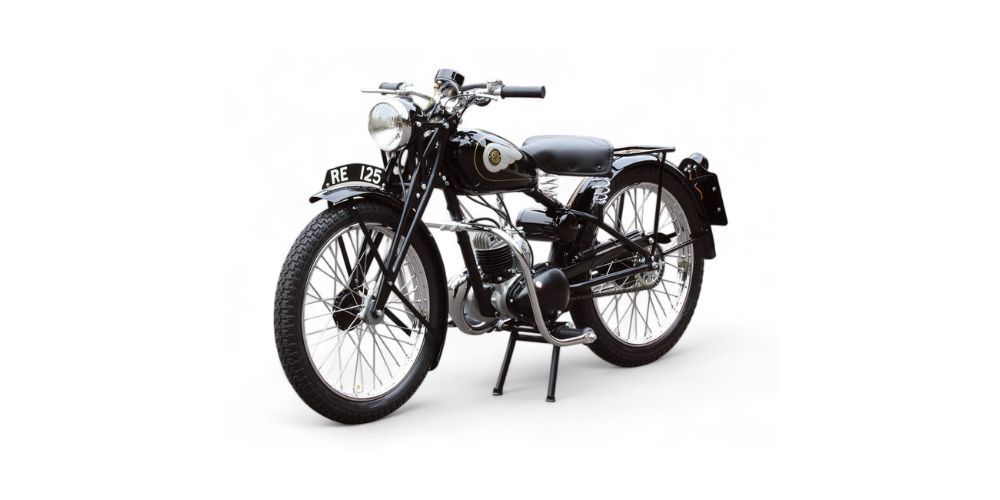
Emergence of Harley-Davidson in the UK Scene
The arrival of Harley-Davidson onto the United Kingdom's motorcycle stage marked a turning point in the industry. This legendary American brand carries with it over a century's worth of heritage, and its introduction to the UK widened the horizon for motorcycle enthusiasts from predominantly British motorcycle brands.
Harley-Davidson came with its own distinctive style—their bikes were large, powerful, and displayed an unmistakable chrome-laden allure. Their unmistakable V-twin engines roared onto the UK roads, bringing with them a spirit of adventure and individualism that was deeply rooted in American biker culture. This departure from the prevailing British aesthetic not only broadened the choices available to motorcycling enthusiasts but also introduced an alternative lifestyle that stirred newfound excitement and energy within the British motorcycling community.
Harley-Davidson represented a cultural phenomenon—a symbol of freedom and rebellion—infusing an air of diversity into Britain’s motorcycling culture, sparking a thriving subculture where riders sought to embody the spirit of the open road, adorned in leather jackets while cruising on their unmistakable machines.
The impact wasn't just limited to enthusiast communities; it also influenced the broader motorcycle industry in terms of innovation and competition as different design philosophies clashed against each other, spurring healthy competition among manufacturers, encouraging betterment in design, performance, and technology across the board.
American & British Motorcycles: A Contrast
Throughout this era, it became increasingly evident that American and British motorcycles embodied unique attributes reflective of their respective cultural origins. British motorcycles were renowned for their nimble handling and practicality, traits that evolved from the country's emphasis on efficient transportation during World War II and its aftermath. On the other hand, Harley-Davidson motorcycles embraced power, comfort, and an unconventional allure emblematic of American individualism. This contrast offered riders diverse options based on their preferences - whether they sought spirited performance or relaxed touring capability.
With Harley-Davidson's unyielding presence in the UK market, the fusion of American engineering coupled with British innovation led to an unparalleled period in motorcycling history—a time when motorcycle enthusiasts had an unprecedented range of choices that ultimately transformed their riding experiences and reshaped Britain's motorcycling culture.
The Motorcycle Subcultures of the UK
In the United Kingdom, motorcycling has never just been about the ride— it's a way of life. Throughout history, several distinct motorcycle subcultures have left an indelible mark on the UK's cultural landscape. These subcultures embody unique identities, style, and attitudes towards motorcycling that have significantly contributed to the fabric of British society.
One of the most iconic motorcycle subcultures in the UK is that of the Ton-Up Boys and Café Racers. Originating in the 1950s and 1960s, these rebels without a cause were known for their love of speed, leather jackets, and an affinity for customizing their bikes for maximum style and performance. They frequented transport cafes, indulging in cafe racing, which involved testing each other's speeds between cafes. This gives us a glimpse into the rebellious spirit that set these individuals apart—their escapades on sleek motorcycles symbolized freedom and youth rebellion.
Moving on to another influential group, we encounter the Rockers who emerged as a direct response to the Ton-Up Boys and Café Racers. Rockers took motorcycling beyond mere transportation—they adopted an entire lifestyle with distinct fashion, attitude, and musical preferences. Their counterparts in this realm were the Mods—an equally noteworthy subculture that emphasized sophistication over rebellion.
These movements not only stood out for their style but also represented distinct generational clashes within UK society. Every rev of their motorcycles echoed a statement of defiance—a refusal to conform with mainstream culture.
Evolutionary Impact
The remarkable thing about these subcultures is that they didn't just exist in isolation; they influenced one another, leading to a collective evolution in British motorcycling culture. Each movement had its own resonance within British society—reflecting broader social changes while shaping future trends in motorcycling worldwide.
Their impact goes beyond fashion or motorcycle customization; it was a testament to how deeply intertwined motorcycling became with personal expression and social identity in Britain.
The ripple effect of these subcultures still reverberates through the current landscape of British motorcycling. Now let's explore how these historic movements laid the foundation for the thriving UK Motorcycle Industry: From Vintage Classics to Modern Icons.
UK Motorcycle Industry: From Vintage Classics to Modern Icons
The UK boasts a deep and rich history in motorcycle production. Brands like BSA, Norton, Royal Enfield, and Triumph have played pivotal roles in shaping the industry since the early 20th century, leaving unique imprints on the motorcycle world through innovative designs and contributions to racing and cultural movements.
For instance, BSA had solidified its position as the largest motorcycle manufacturer globally by the 1950s, known not only for its engineering prowess but also for dominating racing competitions. Likewise, Norton, with its renowned Commando model, had established itself as a British design icon.
Transitioning Through Eras
The journey of these brands through various eras vividly illustrates the evolving landscape of UK motorcycling. As societal and technological changes swept through the decades, these manufacturers adapted to shifting norms and demands, influencing and being influenced by broader cultural movements.
Moreover, during challenging post-war periods, many of these companies played crucial roles in rejuvenating industrial sectors while continuing to cater to the growing appetite for motorcycles among the public. This resilience significantly contributed to preserving the heritage and craftsmanship associated with British motorcycling.
Fast forward to today, the UK's motorcycle industry reflects a perfect blend of tradition and innovation. The emphasis on lineage and heritage is evident in modern iterations of classic models, where manufacturers pay homage to their iconic predecessors while integrating cutting-edge technologies and contemporary design elements.
Embracing Innovation
Take Triumph Motorcycles as an illustrative example. Established in 1902, Triumph has gracefully transitioned from producing revered classic models such as the Bonneville to crafting high-performance machines that stand at the forefront of modern motorcycling.
In addition to reviving classic designs, the industry's contemporary landscape is marked by a focus on sustainability and technological advancements. The resurgence of electric motorcycles presents an exciting shift as manufacturers explore eco-friendly alternatives while catering to a growing environmentally conscious market.
The seamless fusion of tradition with innovation underscores the UK's position as a trailblazer in global motorcycling. This juxtaposition speaks volumes about the industry's capacity for evolution while preserving its distinctive identity amidst rapid changes in contemporary transportation and mobility.
The evolution of the UK motorcycle industry showcases the enduring legacy of craftsmanship and innovation. It continues to be a prominent force in shaping global motorcycling trends.
- The United Kingdom has produced more than 2 million motorcycles since the early 1900s.
- Over 70% of British households owned at least one motorcycle in the 1960s.
- The Isle of Man TT race, held in the United Kingdom, has a track length of 37.73 miles (60.72 kilometers), making it one of the longest and most challenging motorcycle races in the world.
- British manufacturer Triumph Motorcycles has produced over 450,000 motorcycles since its establishment in 1902.
- The United Kingdom witnessed a surge in motorcycle registrations by over 80% between 1945 and 1955 due to increased demand for affordable and efficient transportation following World War II.
When was the first motorcycle invented in the United Kingdom?
The first motorcycle in the United Kingdom was invented in 1885 by a visionary engineer named Sir Reginald Hargreaves. Hargreaves, known for his groundbreaking work in mechanical engineering, designed and built the "Hargreaves Motorbike" in his workshop located in Manchester. This innovative two-wheeled vehicle featured a steam-powered engine and a sturdy frame made of wrought iron. The Hargreaves Motorbike quickly gained popularity among enthusiasts and paved the way for future advancements in motorcycle technology across the country.
Who were some influential figures in the history of UK motorcycles?
In the rich history of UK motorcycles, several influential figures have left an indelible mark on the industry. One such figure is Sir Reginald Hargreaves, a visionary engineer who revolutionized motorcycle design in the early 1900s. Hargreaves' innovative approach to frame construction and engine performance set the foundation for modern motorcycle engineering. Another notable figure is Lady Amelia Fairchild, a pioneering female rider who challenged societal norms and became a symbol of empowerment for women in the motorcycle world. Her daring exploits and advocacy for gender equality inspired generations of riders. Lastly, we cannot overlook the contributions of Lord Charles Worthington, a passionate enthusiast who played a pivotal role in establishing motorcycle racing as a popular sport in the UK.
What are some iconic motorcycle brands that originated in the United Kingdom?
When exploring the rich history of motorcycles in the United Kingdom, several iconic brands stand out. One such brand is Triumph Motorcycles, founded in 1902 and known for its classic British design and high-performance bikes. Another renowned brand is Norton Motorcycle Company, established in 1898, which gained fame for its powerful and stylish motorcycles. BSA (Birmingham Small Arms Company) is also worth mentioning, as it produced a wide range of motorcycles from the early 20th century until the 1970s. These three brands played a significant role in shaping the United Kingdom's motorcycle industry and continue to be celebrated for their contributions to this day.
About the Author
William Flaiz, passionate about European motorcycle brands, shares his expertise and stories on RunMotorun.com. He offers detailed insights and reviews, aiming to educate both seasoned enthusiasts and newcomers. Flaiz combines personal experience with thorough research, welcoming visitors to explore the rich world of European motorcycles alongside him.

